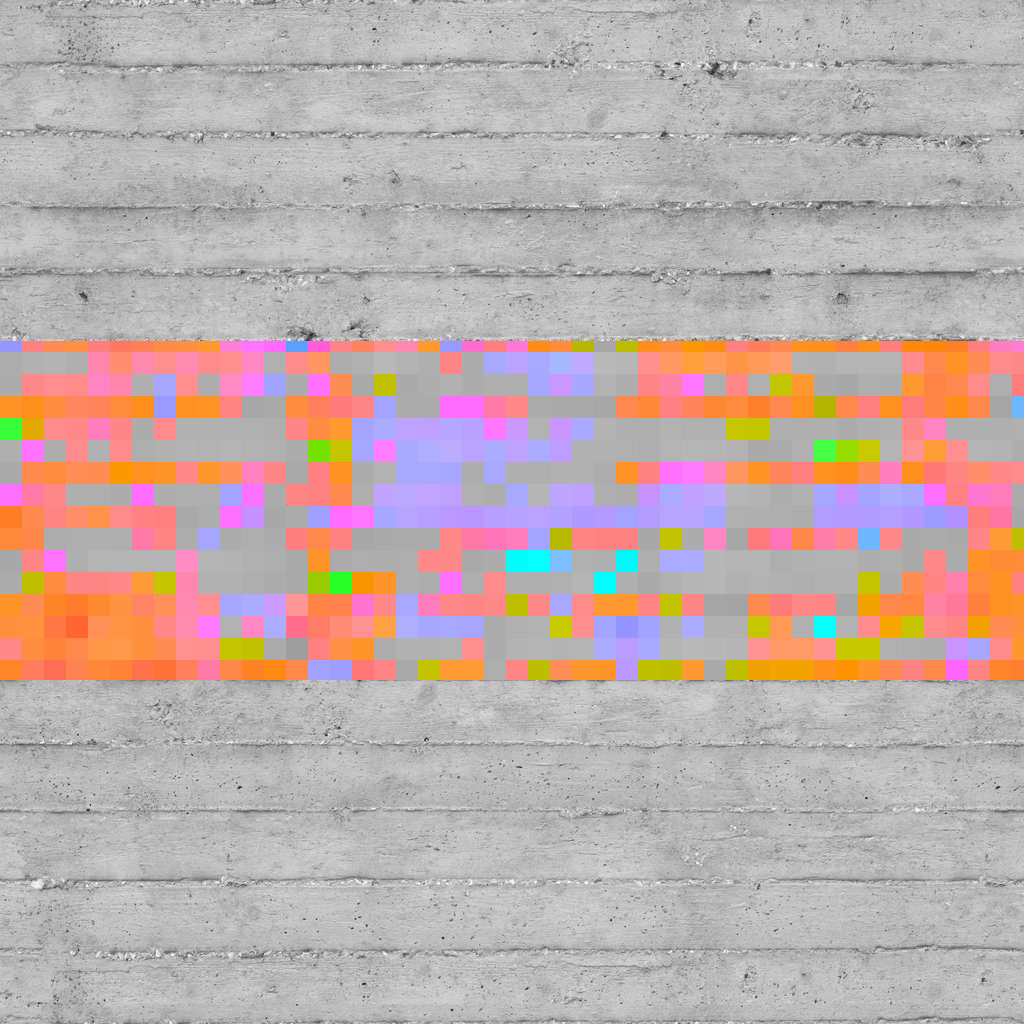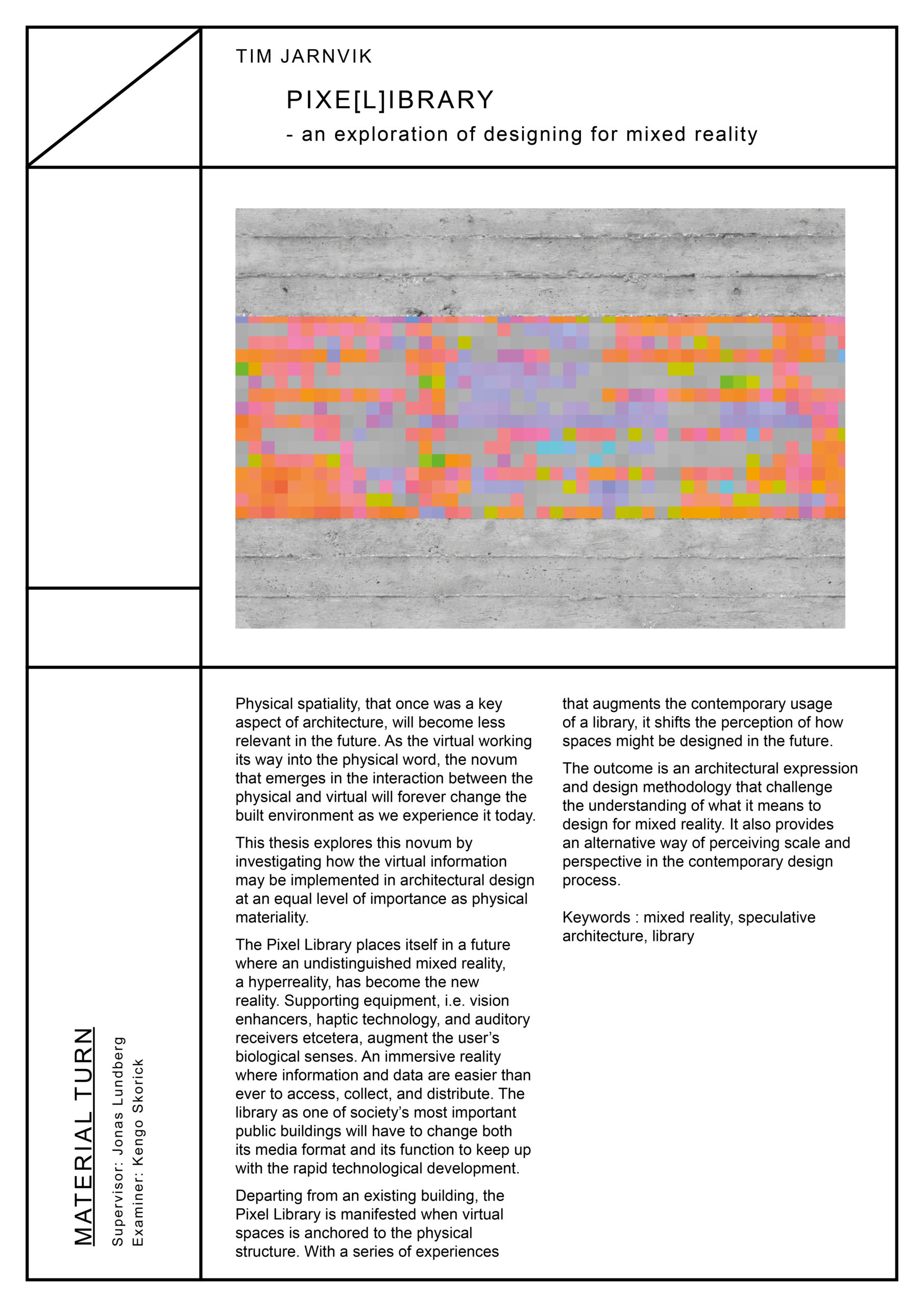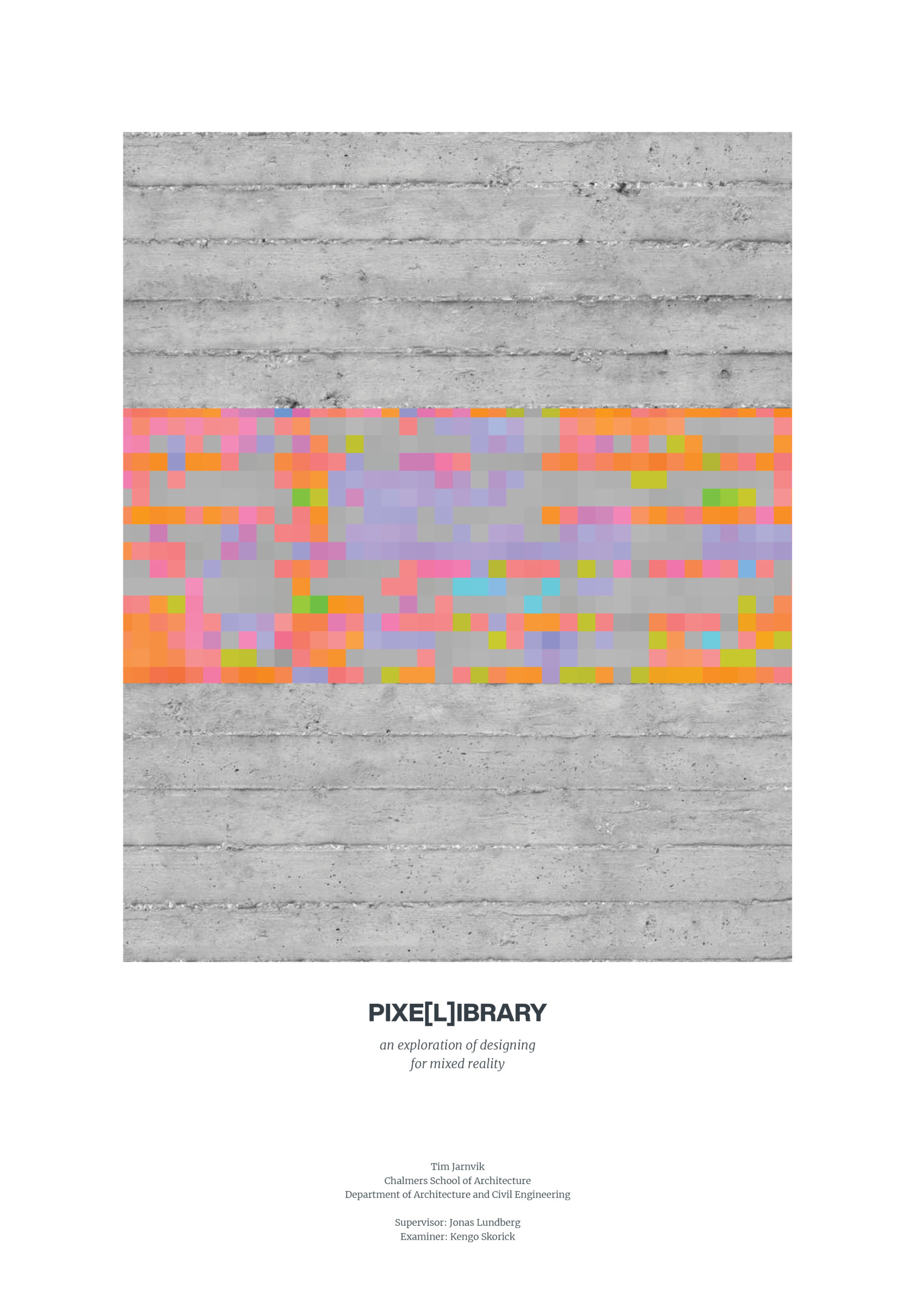
PIXE[L]IBRARY
Physical spatiality, that once was a key aspect of architecture, will become less relevant in the future. As the virtual working its way into the physical word, the novum that emerges in the interaction between the physical and virtual will forever change the built environment as we experience it today.
This thesis explores this novum by investigating how the virtual information may be implemented in architectural design at an equal level of importance as physical materiality.
The Pixel Library places itself in a future where an undistinguished mixed reality, a hyperreality, has become the new reality. Supporting equipment, i.e. vision enhancers, haptic technology, and auditory receivers etcetera, augment the user’s biological senses. An immersive reality where information and data are easier than ever to access, collect, and distribute. The library as one of society’s most important public buildings will have to change both its media format and its function to keep up with the rapid technological development.
Departing from an existing building, the Pixel Library is manifested when virtual spaces is anchored to the physical structure. With a series of experiences that augments the contemporary usage of a library, it shifts the perception of how spaces might be designed in the future.
The outcome is an architectural expression and design methodology that challenge the understanding of what it means to design for mixed reality. It also provides an alternative way of perceiving scale and perspective in the contemporary design process.
Keywords : mixed reality, speculative architecture, library

